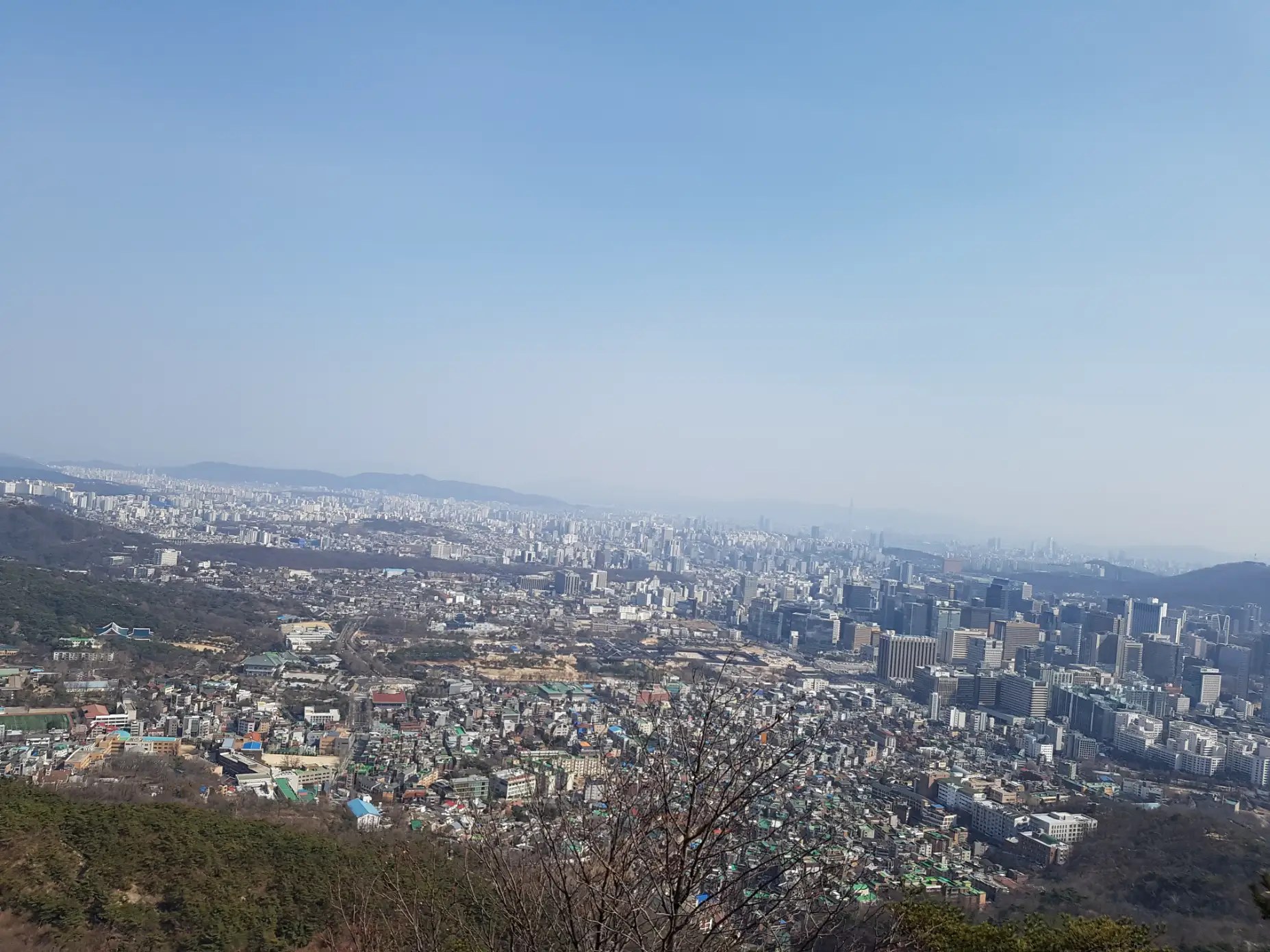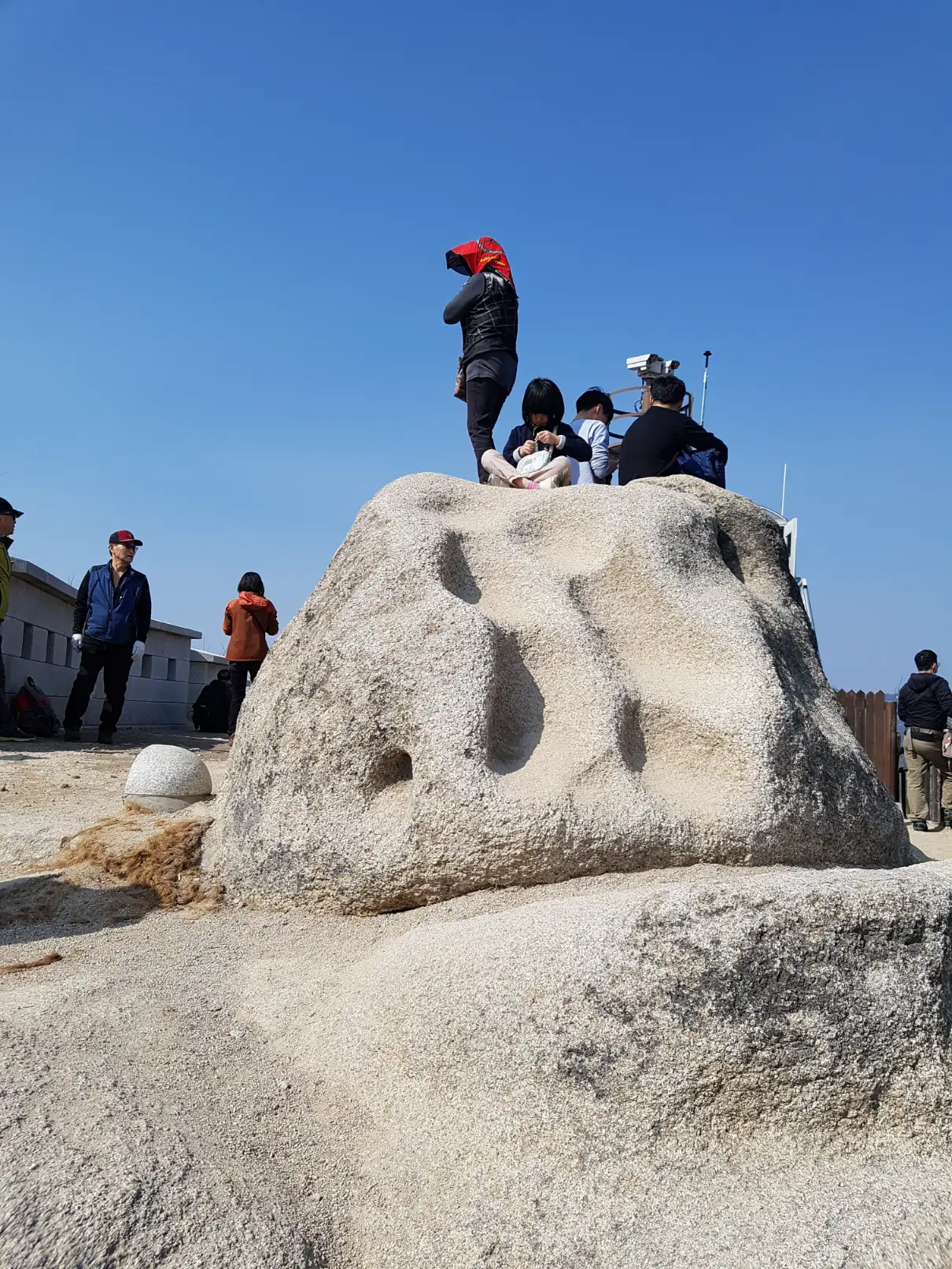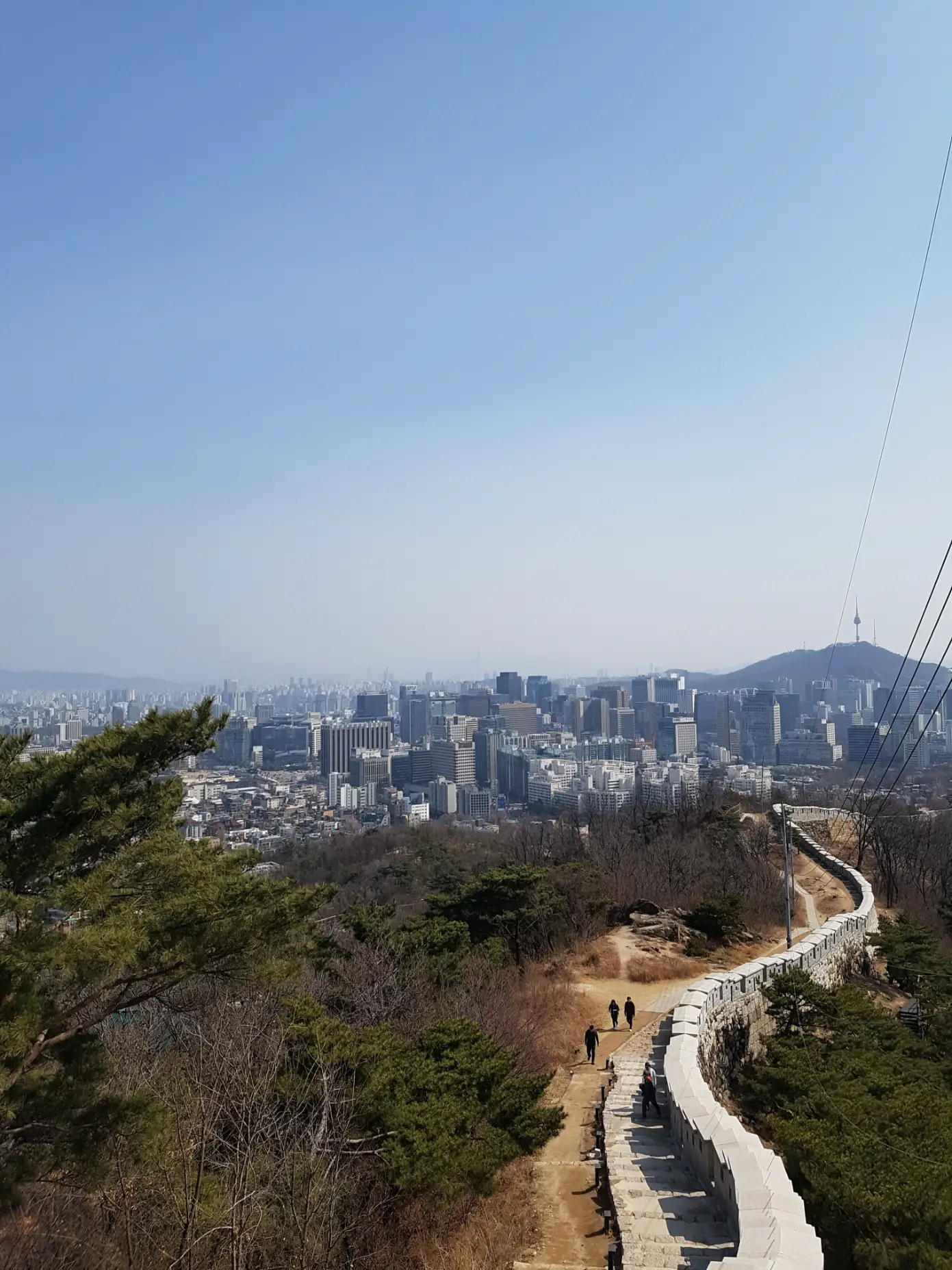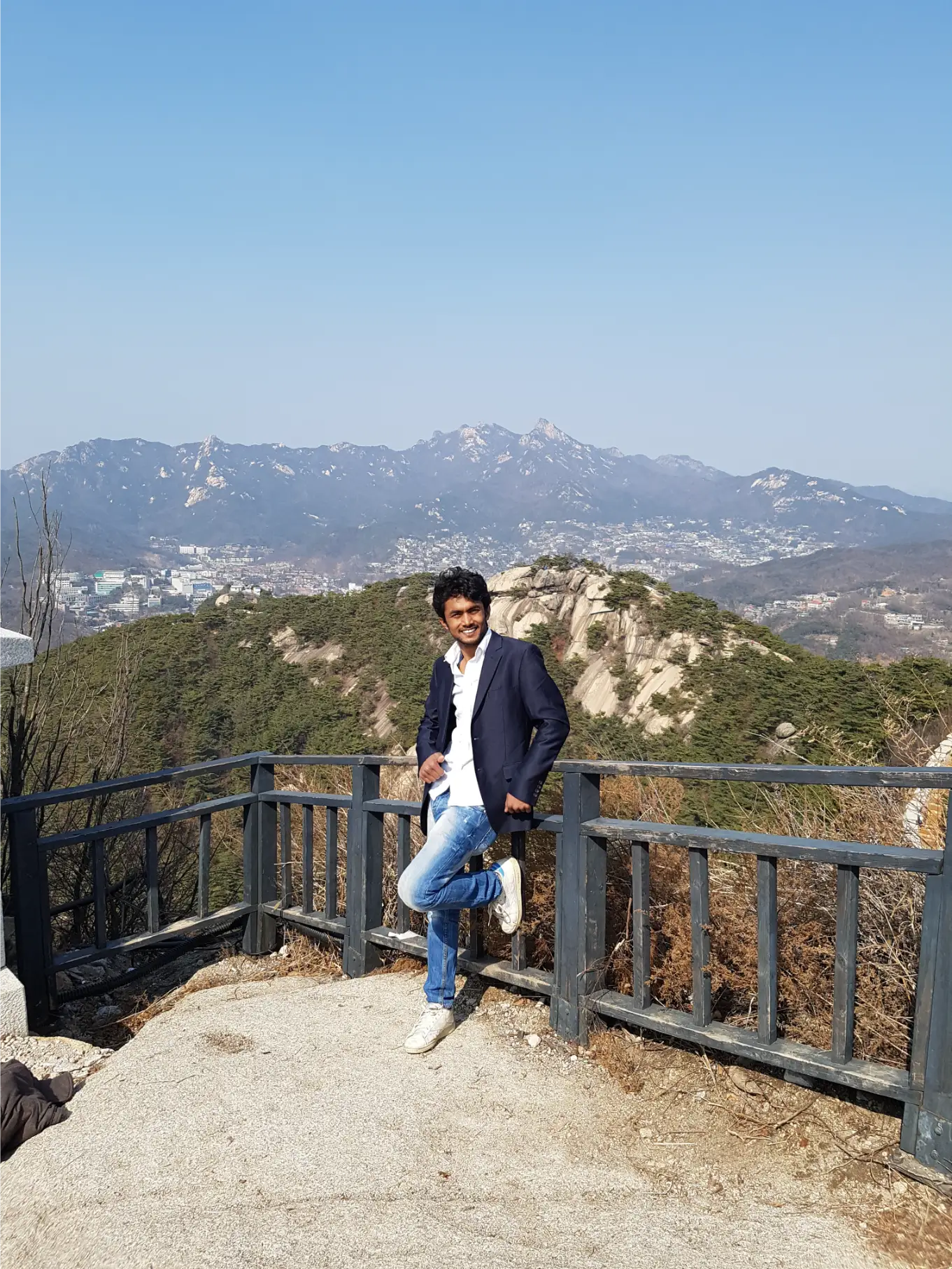Inwangsan Mountain:Trails, Tips, and Attractions
Inwangsan Mountain (인왕산), located in the heart of Seoul, is a must-visit for hikers and nature lovers looking to explore a slice of Korean history, breathtaking cityscapes, and spiritual landmarks. Standing at 338 meters, Inwangsan offers a relatively easy hike with rewarding panoramic views of Seoul’s skyline, including iconic landmarks like Namsan Tower, Gyeongbokgung Palace, and the Han River.

Unlike some of the more physically demanding mountains in Seoul, Inwangsan is ideal for beginner and intermediate hikers, offering a blend of history, spirituality, and natural beauty. Its proximity to the city center makes it one of the most accessible hiking destinations in Seoul, perfect for a half-day adventure.
In addition to its natural allure, Inwangsan is steeped in cultural and spiritual significance. The mountain is home to Shamanist shrines, Buddhist temples, and the remains of the ancient Seoul Fortress Wall, adding a layer of historical depth to your hike.
Why Visit Mount Inwang?
Inwangsan is more than just a mountain; it’s an opportunity to connect with Seoul’s heritage, spirituality, and scenic beauty all in one place. The mountain’s trails weave through significant cultural landmarks such as the Seonbawi (Zen Rock), Guksadang Shrine, and parts of the historic Seoul Fortress Wall, offering a unique hiking experience that combines nature and history.

During your hike, you’ll encounter peaceful moments of reflection at its religious sites, coupled with awe-inspiring views of modern Seoul’s skyscrapers juxtaposed against its historical past. Inwangsan’s relatively short trails and its very close to the seoul city, so if you are looking for short hiking near seoul inwangsan can be a great choice for you.
Planning a trip to Inwangsan Mountain? Here’s everything you need to know about its trails, highlights, tips, and how to make the most of your adventure.
Inwangsan Mountain Hiking Trails: Routes, Highlights, and Tips
Inwangsan Mountain offers several well-defined trails that cater to hikers of all skill levels. Below, we’ve outlined the main trails with detailed descriptions, including the route, estimated time, and highlights to help you choose the best option for your adventure.
1. Inwangsan Fortress Wall Trail
Route:
Starting Point: Jahamun Tunnel → Seoul Fortress Wall → Seonbawi (Zen Rock) → Inwangsan Summit → Return to Jahamun Tunnel
- Length: 4.5 kilometers (loop)
- Time Needed: 2–2.5 hours
- Difficulty: Moderate
Highlights:
This trail follows a section of the historic Seoul Fortress Wall, offering breathtaking views of the city along the way. You’ll pass through Seonbawi, a sacred rock known for its spiritual energy, and climb to the summit, which provides panoramic views of Seoul’s skyline. The trail is particularly stunning during sunrise or sunset.

Tips:
- Wear sturdy shoes as the stone steps along the fortress wall can be uneven.
- Visit early in the morning or late afternoon to avoid the midday heat and enjoy quieter trails.
- Bring a camera to capture the incredible cityscape and the historic wall.
2. Seonbawi and Guksadang Shrine Trail
Route:
Starting Point: Inwangsan Park Entrance → Guksadang Shrine → Seonbawi (Zen Rock) → Summit
- Length: 3.2 kilometers (out-and-back)
- Time Needed: 1.5–2 hours
- Difficulty: Easy to moderate
Highlights:
This trail offers a spiritual journey as it takes you past Guksadang Shrine, a significant Shamanist site, and Seonbawi, a revered natural rock formation. Many visitors stop to meditate or perform rituals at these sites. The summit rewards you with sweeping views of Seoul, including Namsan Tower and Gyeongbokgung Palace.
Tips:
- Respect the rituals and ceremonies at Guksadang Shrine; photography may not be allowed in certain areas.
- Pack light snacks and water for a peaceful break at Seonbawi or the summit.
- This trail is ideal for those looking for a blend of culture and nature.
3. Inwangsan Sunrise Trail
Route:
Starting Point: Buam-dong Trailhead → Steep Ascent → Observation Deck → Summit
- Length: 3.5 kilometers (out-and-back)
- Time Needed: 1.5 hours
- Difficulty: Moderate
Highlights:
This shorter trail is popular among sunrise enthusiasts. The steep ascent offers a good cardio workout, and the summit is the perfect spot to watch the city wake up as the sun rises over the skyline.
Tips:
- Bring a flashlight or headlamp if you’re starting the hike before dawn.
- Dress warmly, especially during cooler months, as it can get chilly at the summit in the early morning.
- Arrive early to secure the best spot for sunrise photography.
4. Fortress Wall to Buam-dong Trail
Route:
Starting Point: Jahamun Tunnel → Seoul Fortress Wall → Descend Toward Buam-dong Village
- Length: 4 kilometers (point-to-point)
- Time Needed: 2 hours
- Difficulty: Moderate
Highlights:
This trail provides a unique perspective of the fortress wall as it descends into the charming Buam-dong Village. Along the way, you’ll enjoy lush greenery, quiet forest paths, and glimpses of Seoul’s modern skyline.
Tips:
- Plan for transportation from Buam-dong back to your starting point if you’re not doing a loop.
- Stop by one of Buam-dong’s quaint cafes to relax after your hike.
- This trail is great for photographers and those seeking a mix of urban and natural scenery.
Best Time to Visit Inwangsan Mountain
Spring (March–May):
Spring is one of the best times to visit Inwangsan Mountain. Cherry blossoms bloom along the trails, and the weather is mild and pleasant, making it perfect for outdoor activities. Trails like the Fortress Wall Trail offer stunning views of blooming trees against the backdrop of Seoul’s skyline.
Summer (June–August):
Summer brings lush greenery and shaded trails, providing a cool escape from the city heat. Morning or evening hikes are recommended to avoid the midday sun. The Seonbawi and Guksadang Shrine Trail is particularly refreshing during this season due to its shaded paths.

Autumn (September–November):
Autumn transforms Inwangsan into a canvas of vibrant red, orange, and yellow hues. The Fortress Wall Trail and Sunrise Trail offer breathtaking views of the foliage combined with the cityscape. This is a popular time for hikers, so visit early to beat the crowds.
Winter (December–February):
Winter hikes on Inwangsan are peaceful and magical. Snow often dusts the fortress wall and trails, creating a serene, postcard-like setting. Be sure to dress warmly and wear appropriate footwear for icy conditions.
What Can Be Combined with Inwangsan Mountain?
Inwangsan’s central location makes it an excellent starting point for exploring nearby attractions:
- Gyeongbokgung Palace: A short distance away, this iconic palace is perfect for combining history with your hike.
- Buam-dong Village: Known for its cozy cafes and art galleries, this charming neighborhood is an ideal post-hike destination.
- Seoul Fortress Wall Trail: Extend your adventure by exploring more sections of the historic fortress wall.
- Hongjecheon Stream: A peaceful spot for relaxation or a leisurely walk after your hike.
How do I get to Inwangsan Mountain?
- By Subway: The easiest way to get to the inwangsan trail is ride on metro Line 3 and get down at Dongnimmun Station and then walk to Jahamun Tunnel for the Fortress Wall Trail.you will see trail sign after getting down the station, or you can ask anyone .
- By Bus: Local buses like 1020 and 7021 stop near the trailheads.
- By Taxi: A quick and convenient option to reach the base of the mountain.
FAQs About Inwangsan Mountain
A: Yes, Inwangsan offers several trails that are perfect for beginners, such as the Seonbawi and Guksadang Shrine Trail. The paths are well-marked and relatively short, making them accessible for all skill levels.
A: Absolutely! Many trails, especially the Seonbawi route, are family-friendly. However, families with young children should avoid trails with steep ascents or uneven steps.
A: Yes, Inwangsan Mountain is open year-round. Each season offers unique experiences, from cherry blossoms in spring to snow-dusted landscapes in winter.
A: Restrooms are available near the trailheads, such as Jahamun Tunnel and Inwangsan Park entrance. It’s recommended to use them before starting your hike as there are no facilities along the trails.
A: Yes, night hikes are possible and can be a fantastic way to enjoy Seoul’s city lights. However, bring a flashlight and stay cautious on uneven terrain.
A: Yes, pets are allowed on most trails but must be leashed. Be mindful of other hikers and clean up after your pet.
A: Depending on the trail you choose, hikes on Inwangsan generally take 1.5 to 2.5 hours.
A: While guided tours aren’t common, local hiking groups often organize excursions. Check platforms like Meetup or local tour agencies for group hikes.
A: Essentials include comfortable hiking shoes, water, snacks, a camera, and weather-appropriate clothing. If hiking at night, don’t forget a flashlight or headlamp.
A: Yes, you might spot squirrels, birds, and insects during your hike. The mountain’s natural environment supports a variety of flora and fauna.
A: Absolutely! Combine your hike with a visit to Gyeongbokgung Palace, Buam-dong’s cafes, or explore more of the Seoul Fortress Wall trail like Ansan mountain for an enriching day.
Additional Information About Inwangsan Mountain
Cultural and Spiritual Significance
Inwangsan is not just a hiking destination; it’s a spiritual hub. The mountain is dotted with shrines and temples, each with its own history and purpose. Seonbawi (Zen Rock) is especially revered, with many visitors praying for good fortune or meditating in its serene surroundings.
Photography Opportunities
Inwangsan is a photographer’s paradise. From the Seoul Fortress Wall’s historic charm to panoramic views of the city, every step offers a picture-perfect moment. The summit is particularly stunning during sunrise or sunset, with the city lights creating a magical ambiance at dusk.
Seasonal Highlights
Inwangsan’s trails are captivating year-round. Spring’s cherry blossoms, summer’s lush greenery, autumn’s fiery foliage, and winter’s snowy vistas ensure that there’s never a dull moment, no matter when you visit.
Accessibility
One of Inwangsan’s greatest strengths is its accessibility. Located just minutes from Seoul’s bustling city center, the mountain offers a peaceful escape without requiring hours of travel.
Nearby Attractions
Inwangsan’s proximity to cultural and historical landmarks makes it an excellent addition to your Seoul itinerary. Gyeongbokgung Palace and Buam-dong Village are just a short distance away, and the Seoul Fortress Wall connects seamlessly to other hiking spots like Bugaksan and Naksan.
